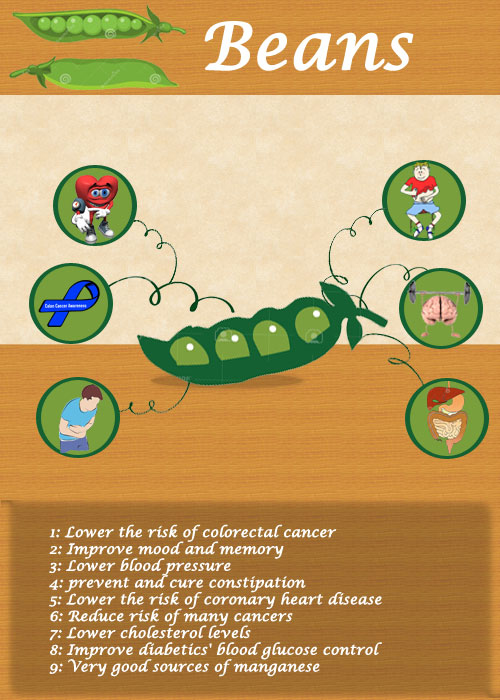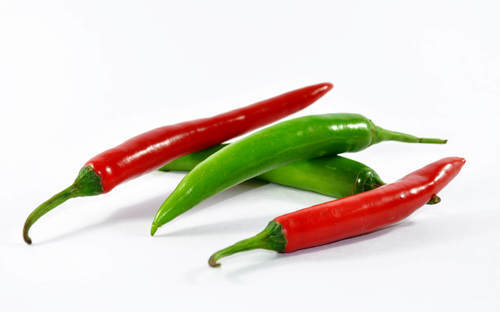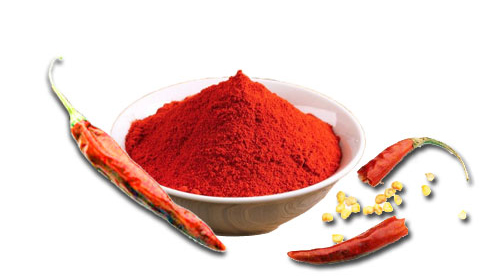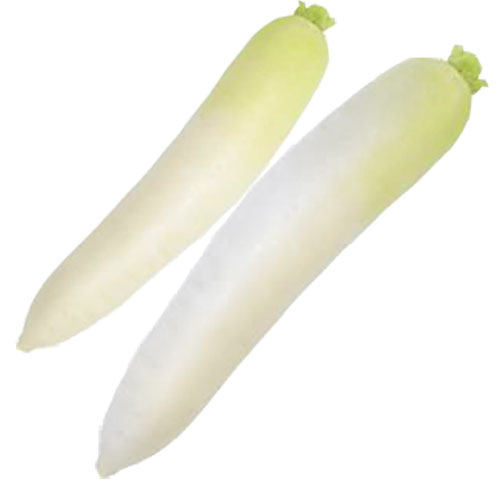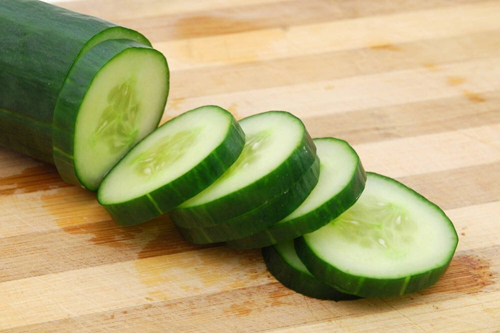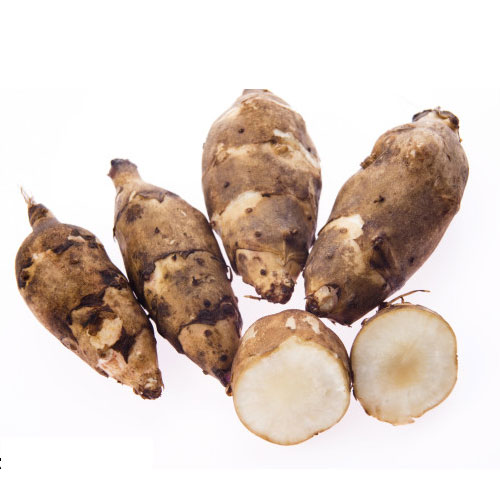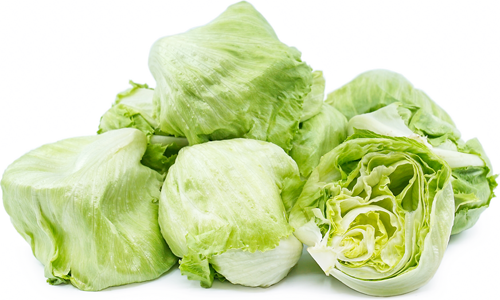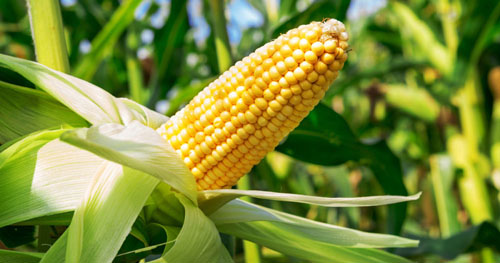List Of Vegetables
- Absinthe Interesting Facts

- Ahipa Nutritional Values

- Akudjura Various Uses

- Amaranth Health Benefits

- American Pokeweed

- Aniseed Myrtle Properties

- Aonori Summary

- Apple Mint Uses

- Arame Medicinal Uses

- Arracacha Nutritional Value

- Artichoke Nutrition Values

 Arugula Health Summary
Arugula Health Summary- Asarabacca Various Uses

- Asparagus Healthy Eating

- Avocado Nutrition Benefits

- Bamboo shoots

- Basil Nutrition Guide

- Beans Beneficial Properties

- Bean sprouts

- Beet Greens Nutrition Facts

- Beets Health Benefits

- Bishop’s weed Various Uses

- Bitter Gourd Nutritional Value

- Black Beans Benefits

- Blue Fenugreek Various Uses

- Boldo Medicinal Values

- Bok Choy Health Benefits

- Borage Greens Medicinal Purposes

- Bottle Guard Aspects

- Broccoli Health Properties

- Broccoflower Nutrition Guide

- Broccoli Raab Nutrition Values

- Broadleaf Arrowhead Health Benefits

- Brussel sprouts Nutrition Summary

- Burdock Health Benefits

- Cabbage Health Facts

- Camas Health Benefits

- Cantaloupe Nutrition Guide

- Canella Uses

- Carrots Health Properties

- Cardoon Nutritional Value

- Carola Summary

- Cassava Health Properties

- Catnip Oil Benefits

- Catsear Flower Uses

- Celeriac Nutritional Value

- Celery Health Benefits

- Chard(Swiss & red)Nutrition Values

- Chaya Nutrition Facts

- Chervil Properties

- Good King Henry

- Chickweed Health Benefits

- Chickpeas Nutrition Summary

- Chile peppers Health Benefits

- Chinese Artichoke Uses

- Chinese Broccoli Nutritional Valu

- Chinese cabbage Nutrition Values

- Chinese Mallow Aspects

- Chives Nutrition Guide

- Chrysanthemum Leaves Uses

- Cicely Unknown Benefits

- Cinnamon Myrtle Medicinal Value

- Collards Nutrition Facts

- Common Purslane Benefits

- Corn Health Values

- Corn Salad Interesting Facts

- Cress Medicinal Values

- Cucumber Health Benefits

- Culantro Leaves

- Curry Leaf Tree Origin

- Collard Greens Nutrition Facts

- Dabberlocks Interesting Facts

- Dandelion Health Benefits

- Dill Health requirements

- Drumstick Nutritional Value

- Dulse Health Benefits

- Earthnut Pea Properties

- Eggplant Nutrition Guide

- Elephant Foot yam Health Benefits

- Elephant Garlic Uses

- Endive Medicinal Properties

- Ensete Health Benefits

- Epazote Properties

- Fat Hen Interesting Facts

- Fingerroot Uses

- French Sorrel Health Facts

- Garlic Nutrition Values

- Gim seaweed Uses

- Ginger Flower Properties

- Ginger Medicinal Values

- Golden Samphire Aspects

- Greater Plantain Medicinal Uses

- Green onions Health Facts

- Green peas Nutrition Values

- Hijiki Nutritional Aspects

- Holy Basil Leaves

- Horseradish Health Benefits

- Onions Nutrition Guide

- Sea Beet Aspects

- Sea Lettuce Health Benefits

- Yam Nutritional Value

- Yarrow Medicinal Uses

- Zucchini Health Guide

- Veggies by seasons

- Veggies did you know??

- Comparison of veggies!!!

- Veggies and it's origin

- Comical View of Veggiess

- Categories of veggies

- Top Veggiess 100 To 91
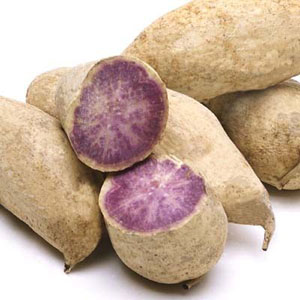
- Top Veggiess 90 To 81
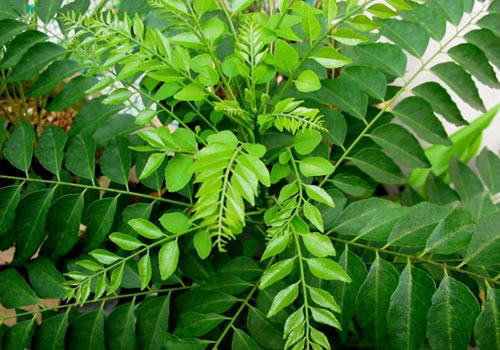
- Top Veggiess 80 To 71
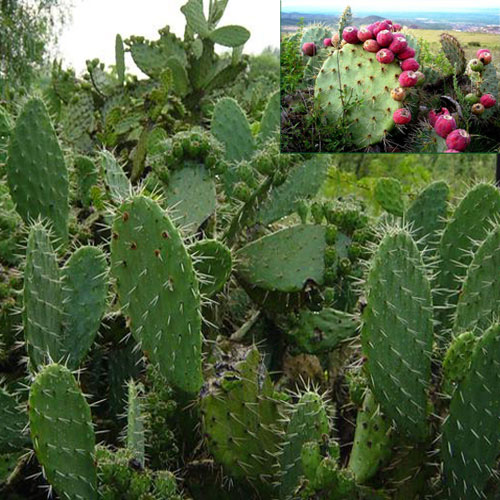
- Top Veggiess 70 To 61
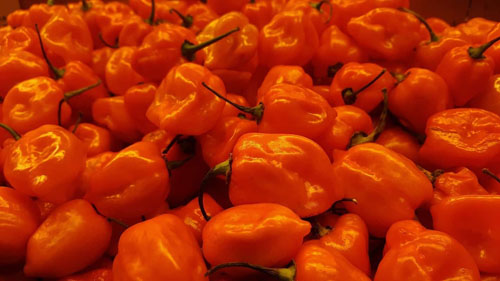
- Top Veggiess 60 To 51
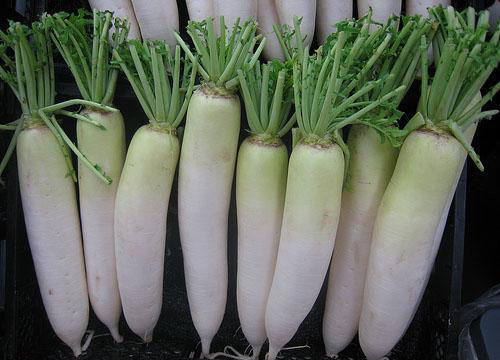
- Top Veggiess 50 To 41

- Top Veggiess 40 To 31
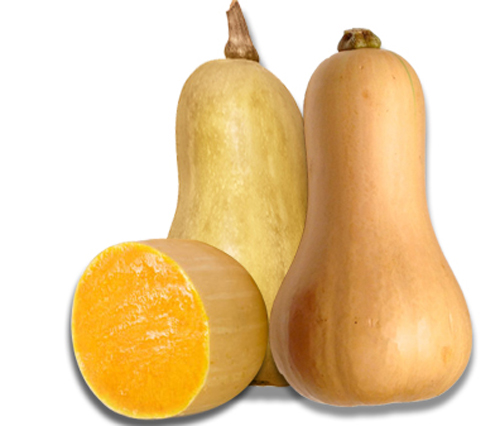
- Top Veggiess 30 To 21

- Top Veggiess 20 To 11
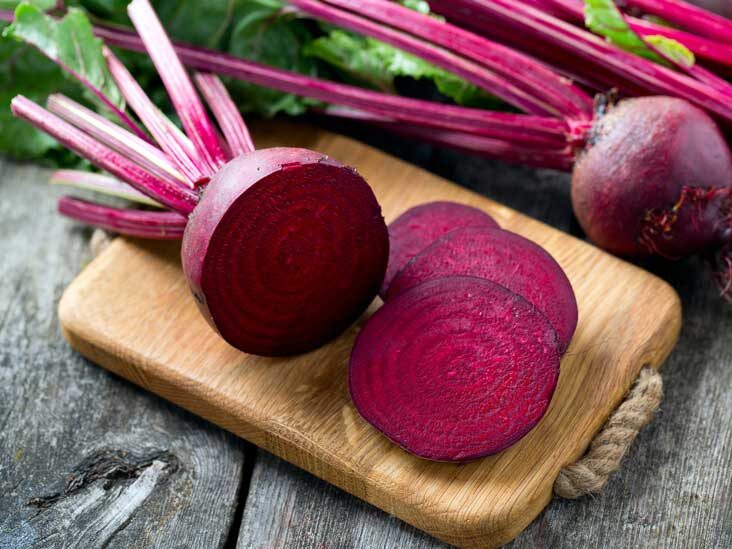
- Top Veggiess 10 To 01
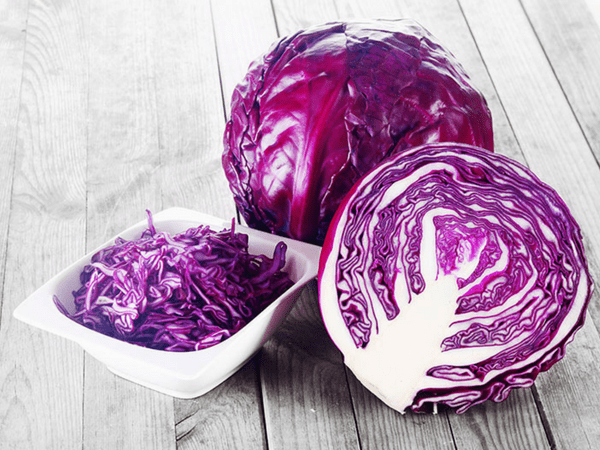
Veggie Picks
Top Veggiess 40 To 31 For Health Benefits
40. Chilly
Chilly is a small and spicy variety of capsicum with a wide range of colors. They can be red, yellow or green with small fiery seeds. Chillyis enriched with Vitamins C, B6 and K1. It is also packed with potassium, copper, Vitamin A and beneficial plant compounds. Chili pepper is used to treat muscular pain and promote weight loss. They contain powerful antioxidants to boost the immune system. Chiliesshould be consumed in small quantities as it may cause burning sensation, stomach ulcers and diarrhea. Chilly is a spice that can be incorporated in many dishes in a powdered form.
- Vitamin-A, and flavonoids like ß-carotene, a-carotene, lutein, zea-xanthin, and cryptoxanthin.
- Chilies are also good in B-complex group of vitamins such as niacin, pyridoxine (vitamin B-6), riboflavin and thiamin (vitamin B-1). These vitamins are essential in the sense that human body requires them from external sources to replenish.
- Chili pepper contains an impressive list of plant derived chemical compounds that are known to have disease preventing and Health Promoting Properties.
- Chilies prevent diabetes and boost metabolism.
- Reduces asthma and wheezing.
- Reduces risk of heart attack and stroke.
- Relieving arthritic pains in the extremities relief from symptoms of colds, sore throats and fevers.
- Excellent source of calcium and vitamin C.
- killing cancer cells.
- Reducing inflammation.
- Producing fat oxidation which can aid in weight loss.
- Helping with gastric relief.
- Preventing sinus infections.
- Psoriasis relief.
| Principle | Nutrient Value | Percentage of RDA |
|---|---|---|
| Energy | 40 Kcal | 2% |
| Carbohydrates | 8.81 g | 7% |
| Protein | 1.87 g | 3% |
| Total Fat | 0.44 g | 2% |
| Cholesterol | 0 mg | 0% |
| Dietary Fiber | 1.5 g | 3% |
| Vitamins | ||
| Folates | 23 µg | 6% |
| Niacin | 1.244 mg | 8% |
| Pantothenic acid | 0.201 mg | 4% |
| Pyridoxine | 0.506 mg | 39% |
| Riboflavin | 0.086 mg | 6.5% |
| Thiamin | 0.72 mg | 6% |
| Vitamin A | 952 IU | 32% |
| Vitamin C | 143.7 mg | 240% |
| Vitamin E | 0.69 mg | 4.5% |
| Vitamin K | 14 µg | 11.5% |
| Electrolytes | ||
| Sodium | 9 mg | 0.5% |
| Potassium | 322 mg | 7% |
| Minerals | ||
| Calcium | 14 mg | 1.5 % |
| Copper | 0.129 mg | 14% |
| Iron | 1.03 mg | 13% |
| Magnesium | 23 mg | 6% |
| Manganese | 0.187 mg | 8% |
| Phosphorus | 43 mg | 6% |
| Selenium | 0.5 µg | 1% |
| Zinc | 0.26 mg | 2% |
| Phyto-nutrients | ||
| Carotene-ß | 534 µg | — |
| Carotene-a | 36 µg | — |
| Cryptoxanthin-ß | 40 µg | — |
| Lutein-zeaxanthin | 709 µg | — |
Chile peppers are intense in nature. Two tablespoons of Chile pepper powder consist of 15 calories. This food is not just low on calorie but is also very rich source of vital vitamins such as Vitamin E, Vitamin K, Vitamin C , Fibre and other minerals such iron, manganese and copper. Chile peppers are known to have capsaicin that gives the taste of pungency it is also known to posses neuropeptide that has anti inflammatory properties.
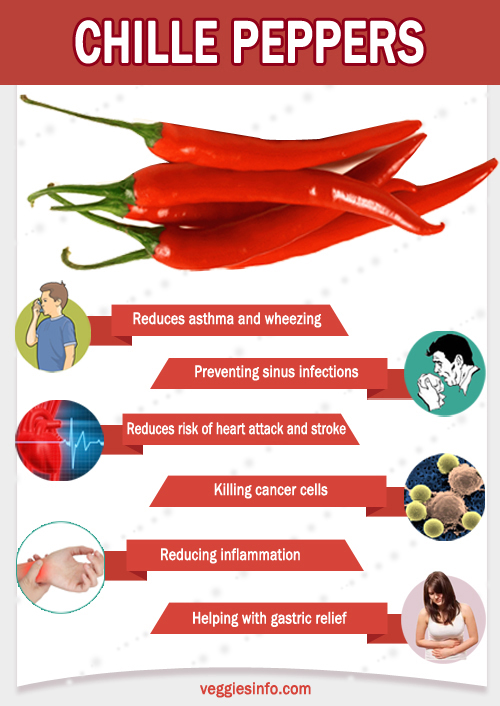
39. Cayenne
Cayenne pepper is a type of the chili pepper that has smoky, pungent Aroma and intense heat. It is packed with Vitamin A. Cayenne pepper also contains Vitamins C, K and B6, manganese, potassium, riboflavin and fiber. The capsaicin present in cayenne may benefit the healthy metabolism and digestive health. It helps to reduce the risk of cancer, blood pressure, muscular pain and hunger.
Cayenne pepper is mainly used to add flavor to salad, curries andto many of our dishes.
According to latest researches, the Cayenne pepper contains capsaicin, a strong chemical compound which has an anti-proliferative effect on cancer cells. It has unmatchable high contents of vitamin A along with vitamin B, vitamin E, vitamin C in moderate amount. Its consumption almost instantly enhances oxygen levels in body and boosts the metabolism manifolds. It does wonder for our system by equalizing blood pressure and regulating blood flow. Minerals like potassium and manganese can be sourced from it too. Cayenne pepper is now also being used as a flavour enhancer by the beverage industry.
| Principle | Nutrient Value | Percentage of RDA |
|---|---|---|
| Calories | 17 | |
| Total Fat | 0.92 g | 1% |
| Saturated | 0.17 g | 1% |
| Trans Fat | ||
| Cholesterol | 0 mg | 0% |
| Sodium |
159 mg | 0% |
| Total Carbs |
106.74 mg | 3% |
| Dietary Fiber |
1.44 g | 6% |
| Sugars |
0.55 g | 0% |
| Protein | 0.64 g | |
| Vitamin A | 2205.33 IU | 44% |
| Vitamin C | 4.05 mg | 7% |
| Calcium | 7.84 mg | 1% |
| Iron | 0.41 mg | 2% |
- Cayenne Pepper is Real Caretaker of the Heart: It can prevent heart attacks and strokes by managing the factors that lead to clots, blockage of arteries. It reduces risk of atherosclerosis, regulates blood pressure, decreases the build up of cholesterol, and dilates blood vessels which increase the flow of blood to maintain a healthy heart.
- It is An Amazing Detoxifier: Cayenne pepper stimulates the body to produce natural warmth, leads to proper blood flow, encourages the process of sweating and improves the working of both the intestines and capsaicin aids in fat oxidation. Finally, all this leads to assimilation and elimination of toxins out of the system, thus helping in the weight management.
- An Anti-Allergen That You Will Love:
It is a counter irritant which will almost and instantly soothes, alleviates any kind of allergy related to skin and blood. It pumps up blood flow to the skin and flushes out the toxins.
Along with these, it also calms down any redness, bumpiness and itching due to allergy. - Get Relieved From the Pain Naturally: It can help in relieving joint pain due to gout and arthritis, menstrual cramps, body ache, sore throat and pain due to injuries. It is a great help to migraine patients. Basically, it cuts down the response to pain by creating a diversion for nerve impulses and taking brain's attention to a new site.
- Cayenne pepper Acts Like An Amazing Carminative: It works amazingly as a carminative. It stimulates the digestive tract, helps in peristalsis, increases secretion of stomach juices and enzymes. It sets up bowel movement leading to proper assimilation of food, digestion of nutrients and elimination of waste. It is a traditional medicine used against cholera, food poisoning and other stomach related problems.
38. Butternut squash
Butternut squash is a bell shaped winter squash with muted yellow rind and orange flesh. It has a sweet, buttery and nut flavor similar to pumpkin. It is particularly rich in Vitamin A and has a moderate amount of Vitamin C, Vitamin E, thiamine, niacin, Vitamin B6, folate, magnesium, potassium and manganese. Butternut squash helps to promote weight loss and prevents the risk of cancer and heart diseases. It helps to promote our eye health and immune system. Butternut squash can be easily incorporated in both sweet and savory dishes.
Butternut is packed with health beneficial vitamins, nutrients, minerals and anti oxidants that are needed for optimum health. It contains important B-complex vitamins such as riboflavin, niacin, pantothenic acid, folates and vitamin B-6. It is rich in omega-3 fatty acid that helps to reduce 'bad cholesterol' and increase 'good cholestrerol'. It is an excellent source of vitamin E and minerals such as calcium, manganese, copper, iron, magnesium and zinc.
- Omega 3 fatty acids present in butternuts help to lose weight and also reduce inflammation in the body.
- It is also used to treat chronic diseases such as arthritis, diabetes (high level of blood sugar), blood pressure, and artery diseases.
- As it contains good amount of antioxidants, it prevents cell damages caused by sun and aging.
- Historically, Butternut extract from the bark of the tree was used to treat smallpox, dysentery and other stomach and intestinal problems.
- Butternut oil has flavorful aroma and hence exhibits an excellent astringent properties that helps to prevent skin dryness.
The butternut tree is cultivated mainly for its richly flavored nuts than its lumber. However, small amounts of lumber are used in furniture and intricate woodcarvings as the wood is softer to handle than other walnut wood. Butternut tree bark is often used to dye cloths. It color range extends from light yellow to dark brown. Its sapwood is collected and made into syrups.
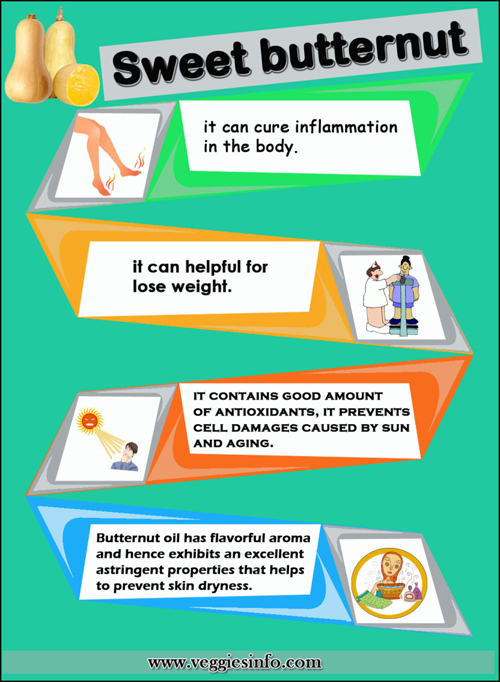
37. Radish
Radish is an edible root vegetable that comes in different shapes, colors, and sizes. It has a spicy and peppery flavor with a crunchy bulb. Radish is a good source of Vitamin C, folate, potassium, Vitamin B6 and fiber. Radish helps to eliminate the cells that can cause cancer. It supports healthy digestion, heart health, weight loss and promotes healthy complexion. Radish reduces the risk of type 2 diabetes, lowers blood pressure and helps to fight fungus that cause vaginal and oral infections.
Radish can be incorporated in salads and cooked to reduce its spicy and pungent aroma.
- Provides just 16 Calories Per 100 g.
- Very good source of anti-oxidants, electrolytes, minerals, vitamins and dietary fiber.
- Lowers cancer risk.
- Regulates blood pressure.
- Good for diabetics.
- Beats cold and cough.
- Helps you recover from jaundice.
- Fights constipation.
- Helps with weight loss.
- Good for asthma patients.
- Keeps you looking younger.
- Keeps the kidneys healthy.
Radish is a popular and one of the highly consummated vegetable in the world. Owing to its health benefits radish comes across as a wonder vegetable that needs to be incorporated in everyone's diet. Consuming radish can prove to treat a person diagnosed with jaundice as it removes bilirubin. The Black radish variety is mostly used for treating jaundice. It restores the blood levels to normalcy and builds immunity to fight against the disease. The detoxifying compounds present in the food helps purifying blood and discarding waste from liver and stomach. Radish is also known for its ailing properties that help in treating piles. It facilitates water retention in the body and enhances digestive process that relieves the body from constipation. Food rich in diuretic properties such as radish helps in healing urinary disorders and fixes constipation that poses as a threat for the occurrence of piles. Radishes are rich in roughage and high in water content too; this food aids in weight loss as it keeps one full for a longer period. Colon cancer, breast cancer, prostate cancer can be avoided because of the folic acid, Vitamin C, anthocyanins present in radish helps in fighting against these life taking diseases. Radish is also known for controlling diabetes and regulates the absorption of sugar in the blood levels. Blood pressure a common sighted problem by many today can be majorly relieved on consumption of radish.
| Principle | Nutrient Value | Percentage of RDA |
|---|---|---|
| Energy | 16 Kcal | 1% |
| Carbohydrates | 3.40 g | 3% |
| Protein | 0.68 g | 1% |
| Total Fat | 0.10 g | <1% |
| Cholesterol | 0 mg | 0% |
| Dietary Fiber | 1.6 g | 4% |
| Vitamins | ||
| Folates | 25 µg | 6% |
| Niacin | 0.254 mg | 1.5% |
| Pyridoxine | 0.071 mg | 5.5% |
| Riboflavin | 0.039 mg | 3% |
| Vitamin A | 7 IU | <1% |
| Vitamin C | 14.8 mg | 25% |
| Vitamin E | 0 mg | 9% |
| Vitamin K | 1.3 µg | 1% |
| Electrolytes | ||
| Sodium | 39 mg | 2.5% |
| Potassium | 233 mg | 5% |
| Minerals | ||
| Calcium | 25 mg | 2.5% |
| Copper | 0.050 mg | 5% |
| Iron | 0.34 mg | 4% |
| Magnesium | 10 mg | 2.5% |
| Manganese | 0.069 mg | 2.5% |
| Zinc | 0.28 mg | 2% |
| Phyto-nutrients | ||
| Carotene-ß | 4 µg | — |
| Carotene-a | 0 µg | — |
| Lutein-zeaxanthin | 10 µg | — |
The parts of radish that are edible are its roots, flowers and leaves. The leafy greens of radish can be prepared in to curry using Indian condiments and can be eaten as accompaniments with Indian breads. The root of radish is used to make pickles in many parts of India using oil and salt for preservatives. These tap root of this vegetable can be eaten raw in salads or be sautéed and added with other vegetables as a part of other dishes. Radish is added to European cuisine and also appears in potato soup with leeks. Adding then to healthy smoothies is a good addition to the diet.
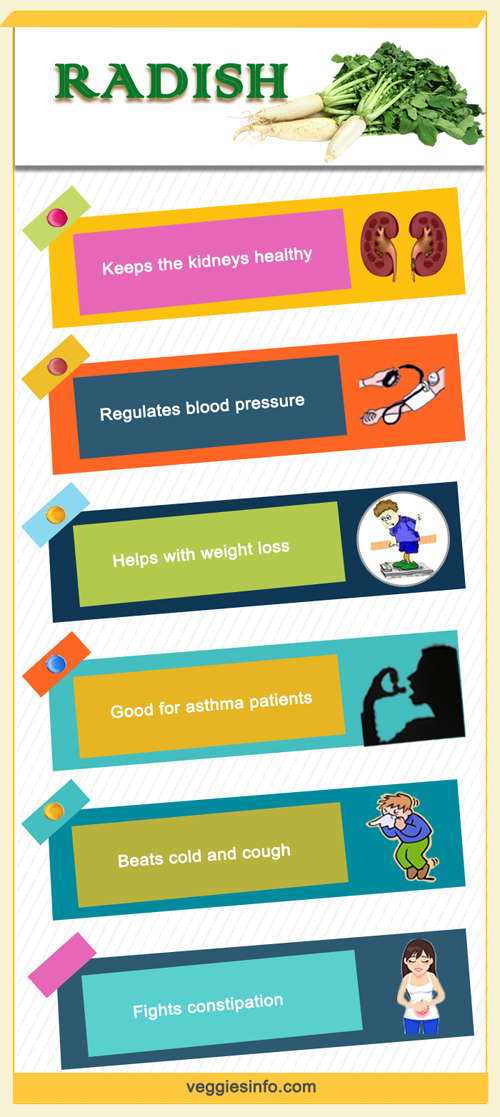
36. Cucumber
Cucumber is a summer squash with green to yellow polished skin. Cucumber is treated as a fruit rather than a vegetable. It is harvested when immature to have soft edible seeds. Cucumber is a succulent vegetable with soft and juicy flesh with the hint of the floral notes. Cucumber is rich in Vitamin K, Vitamin C, magnesium, potassium, manganese, and protein. It has low calories, high water content and soluble fiber that helps in promoting weight loss and hydration. Cucumber helps to reduce the risk of chronic diseases, blood sugar level and promote regular bowel movements.
Cucumber is generally eaten raw as a low calorie snack and adds a flavor in salad.
- It contain Vitamin B1, Vitamin B2, Vitamin B3, Vitamin B5, Vitamin B6, Folic Acid, Vitamin C, Calcium, Iron, Magnesium, Phosphorus, Potassium and Zinc.
- Ability to cool the temperature of the blood.
- Kill the Bacteria that are responsible for causing bad breath.
- Avoiding both a hangover and headache.
- Improving your memory and protecting your nerve cells from age-related decline.
- Lower your risk of breast, uterine, ovarian, and prostate cancers.
- Maintain a Healthy Weight Support Heart Health.
- Support Your Digestive Health.
- Manage Stress Skin and hair care.
- Cures diabetes, reduces cholesterol and controls blood pressure.
- Promotes joint health, relieves gout and arthritis pain.
This is not just popular for its culinary use but also for its medicinal properties and nutritional values. One cup of cucumber which is 104 g contains only 16 calories.It is 95% water, biting into a slice of cucumber makes you feel hydrated and fresh. Its hydrating quality helps you flush out unnecessary toxins from the body thus having a detox effect.They are known to contain compounds such as lariciresinol, pinoresinol and secoisolariciresinol these 3 compounds are known profoundly for fighting cancer such as breast cancer , ovarian cancer and prostate cancer. Its anti inflammatory properties and fibre compounds helps in weight loss and smooth digestion, cucumber can also be used as a laxative that aids in evading constipation. Rich in vitamin A, vitamin B and calcium cucumber promotes bone health keeping joint pain and arthritis at bay. The peep of the cucumber is used as a beauty hack for a good skin; it helps in treating sun burns on skin just like aloevera.It stimulates hair growth; those who are longing for good tresses should include cucumber in their diets.
| Principle | Nutrient Value | Percentage of RDA |
|---|---|---|
| Energy | 15 Kcal | <1% |
| Carbohydrates | 3.63 g | 3% |
| Protein | 0.65 g | 1% |
| Total Fat | 0.11 g | 0.5% |
| Cholesterol | 0 mg | 0% |
| Dietary Fiber | 0.5 g | 1% |
| Vitamins | ||
| Folates | 7 µg | 2% |
| Niacin | 0.098 mg | <1% |
| Pantothenic acid | 0.259 mg | 5% |
| Pyridoxine | 0.040 mg | 3% |
| Riboflavin | 0.033 mg | 3% |
| Thiamin | 0.027 mg | 2% |
| Vitamin A | 105 IU | 3.5% |
| Vitamin C | 2.8 mg | 4.5% |
| Vitamin E | 0.03 mg | 0% |
| Vitamin K | 16.4 µg | 13.6% |
| Electrolytes | ||
| Sodium | 2 mg | 0% |
| Potassium | 147 mg | 3% |
| Minerals | ||
| Calcium | 16 mg | 1.6% |
| Iron | 0.28 mg | 3.5% |
| Magnesium | 13 mg | 3% |
| Manganese | 0.079 mg | 3.5% |
| Phosphorus | 24 mg | 3% |
| Zinc | 0.20 mg | 2% |
| Phyto-nutrients | ||
| Carotene-ß | 45 µg | — |
| Crypto-xanthin-ß | 26 µg | — |
| Lutein-zeaxanthin | 23 µg | — |
It is used in fresh salads; an ingredient that keeps the salad crunchy low on calorie and also hydrating your body. Cucumbers are summer food and always eaten to beat the heat, sliced cucumber is used in sandwiches with tomatoes and coleslaw making it a nice high tea snack. Pickled cucumber is popular in the western countries also known gherkins. Cold soup made out of cucumbers and mint is a refreshing palate cleanser.In order to improve the quality of cucumber farmers are resorting to heavy usage of pesticides and other growth inducing medicines, care needs to be taken while picking the right cucumber. Always opt for organically produced cucumber as it has no side effects.

35. Sunchokes
Sun choke, also called sun root or earth apple, is a starchy vegetable similar to potato and turnip. It has a nutty, sweet flavor and crunchy texture. It has the potential to reduce premature aging and control blood pressure. Sun chokes boost the immune system, control cholesterol, muscle function and promote a healthy cardiovascular system.
Sun chokesare boiled and eaten to have a soft inner filling.
- Sunchokes has minor amount of protein and major amount of carbohydrate called inulin and zero percent oil.
- This Sunchokes taste sweeter since it has a component called fructose.
- The people suffering from diabetes type 2 can consume this root vegetable lavishly in their food items .
- The Sunchokes part of this plant comes from the taste of edible tuber.
- Since the carbohydrate inulin is found in this tuber it is used as a dietary fiber which improves the digestive system.
- Each plant can yield up to 200 tubers by fall end.
- This vegetable is also rich in vitamins, minerals and energy. In Germany, these tubers are used in liquors and the brand owners sell it in the name "Sunchokes".
- The leaves are consumed by cattle as fodder food. The roots should be boiled and consumed. The tubers are used like potatoes.
| Principle | Nutrient Value | Percentage of RDA |
|---|---|---|
| Energy | 73 Kcal | 3.70% |
| Carbohydrates | 17.44 g | 13% |
| Protein | 2 g | 4% |
| Total Fat | 0.01 g | <1% |
| Cholesterol | 0 mg | 0% |
| Dietary Fiber | 1.6 g | 4% |
| Vitamins | ||
| Folates | 13 µg | 3% |
| Niacin | 1.3 mg | 8% |
| Pantothenic acid | 0.397 mg | 8% |
| Pyridoxine | 0.077 mg | 6% |
| Riboflavin | 0.060 mg | 4.50% |
| Thiamin | 0.200 mg | 17% |
| Vitamin A | 20 IU | <1% |
| Vitamin C | 4 mg | 7% |
| Vitamin E | 0.19 mg | 1% |
| Vitamin K | 0.1 µg | <1% |
| Electrolytes | ||
| Sodium | 4 mg | <1% |
| Potassium | 429 mg | 9% |
| Minerals | ||
| Calcium | 14 mg | 1.40% |
| Copper | 0.140 mg | 15% |
| Iron | 3.40 mg | 42.50% |
| Magnesium | 17 mg | 4% |
| Manganese | 0.060 mg | 2% |
| Selenium | 0.7 µg | 1% |
| Zinc | 0.12 mg | 1% |
| Phyto-nutrients | ||
| Carotene-ß | 12 µg | — |
| Carotene-α | 0 µg | — |
| Lutein-zeaxanthin | 0 µg | — |
34. Iceberg lettuce
Iceberg lettuce is a variety of lettuce with crunchy, pale green-layered leaves. It has a neutral taste and refreshing aroma. Iceberg lettuce contains Vitamin C, calcium, Vitamin K, Vitamin A, folate and potassium. It is a low calorie vegetable that is used to promote weight loss. It benefits your immune system, nerve function, eye health and supports cell growth. Iceberg lettuce helps women to get pregnant. It also reduces the blood pressure and cardiovascular disease. Iceberg lettuce is enjoyed in burgers and salad.
- Improve blood clotting
- Support eye health
- Protects your heart
- Helps to strengthen body immunity
- Iceberg lettuce for stronger bones
- Helps to prevent anemia
- Helps to prevent birth defects
- Calories: 10
- Fat: 0.1g
- Sodium: 7.2mg
- Carbohydrates: 2.1g
- Fiber: 0.9g
- Sugars: 1.4g
- Protein: 0.6g
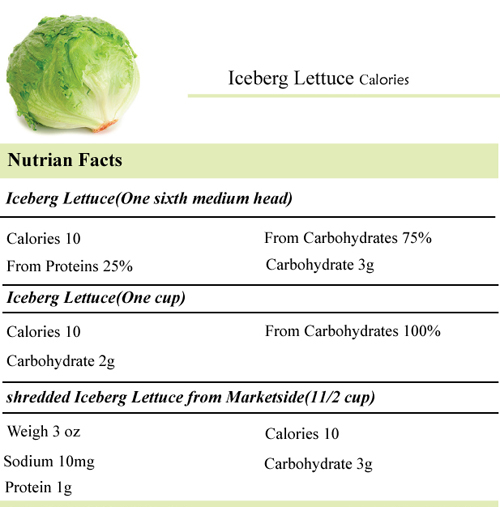
33. Corns
Maize, popularly known as corn is a starchy vegetable and cereal grain having sweet, juicy and buttery flavor. Corn is loaded with carbohydrates and contains fiber, Vitamin C, thiamine, folate, magnesium and potassium. Corn may benefit your eye health that prevents cataracts and age related macular degeneration. Eating corn on a limited level may balance the blood sugar level. The fiber content in corn lowers the risk of heart disease and cancer.
Corn can be packed into popcorn, tortillas, chips, polenta, oil, syrup and added to other dishes.
- It contains healthy amounts of some important minerals like zinc, magnesium, copper, iron, and manganese.
- It is a good source of phenolic flavonoid antioxidant, ferulic acid. Several research studies suggest that ferulic acid plays vital role in preventing cancers, aging, and inflammation in humans.
- It plays a significant role in the Prevention Of Digestive Ailments like constipation and hemorrhoids as well as colorectal cancer.
- Protect you from developing chronic eye disease such as muscular degeneration and cataracts.
- Decrease your risk of heart disease, colon cancer.
- Helps rid your body of toxins faster.
- Prevents Anemia.
- Controls diabetes and hypertension.
- Rich source of vitamins and minerals.
- Improve bone strength.
- Reduce risk of various cardiovascular diseases.
- Healthy eye site and skin.
- Stronger Connective Tissue.
Corn was first grown by Native Americans more than 7,000 years ago in Central America.
Sweet corn leaves were used as chewing gum by Native Americans.
| Principle | Nutrient Value | Percentage of RDA |
|---|---|---|
| Energy | 86 Kcal | 4% |
| Carbohydrates | 18.70 g | 14% |
| Protein | 3.27 g | 6% |
| Total Fat | 1.35 g | 7% |
| Cholesterol | 0 mg | 0% |
| Dietary Fiber | 2.0 g | 5% |
| Vitamins | ||
| Folates | 42 µg | 10.5% |
| Niacin | 1.770 mg | 11% |
| Pantothenic acid | 0.717 mg | 14% |
| Pyridoxine | 0.093 mg | 7% |
| Riboflavin | 0.055 mg | 4% |
| Thiamin | 0.155 mg | 13% |
| Vitamin A | 187 IU | 6% |
| Vitamin C | 6.8 mg | 11% |
| Vitamin E | 0.07 mg | <1% |
| Vitamin K | 0.3 µg | 2% |
| Electrolytes | ||
| Sodium | 15 mg | 1% |
| Potassium | 270 mg | 6% |
| Minerals | ||
| Calcium | 2 mg | <1% |
| Copper | 0.054 mg | 6% |
| Iron | 0.52 mg | 6.5% |
| Magnesium | 37 mg | 9% |
| Manganese | 0.163 mg | 7% |
| Selenium | 0.6 µg | 1% |
| Zinc | 0.46 mg | 4% |
| Phyto-nutrients | ||
| Carotene-ß | 47 µg | — |
| Carotene-a | 16 µg | — |
| Cryptoxanthin-ß | 115 µg | — |
| Lutein-zeaxanthin | 644 µg | — |
This is known for its high calorific value where a 100g of corn consist of 365 calories. It has fatty acids and will ensure a weight gain, people who are looking to put on weight in a healthy way can sought after to corn for desired results. It is a very rich source of phyto-chemicals a compound derived directly from plants. This is very rich source of fibre; one cup of corn consists of 18.5% of recommended level of daily intake of fibre. Food rich in fibre helps in smooth bowel moments and also keeps hemorrhoids at bay. It is also proven that fibre helps in evading colon cancer as corn is a whole grain vegetable. It is also known for its folate and anti oxidant property that boost the immune system of the body, protecting it from many chronic diseases. A good heart is only a resultant of good food,it is rich in iron and omega 3 fats which is also known as good fats. Iron increases the blood level of the body where as omega 3 fats filter the bad cholesterol from good cholesterol thus preventing cardiovascular diseases. Owing to its iron content corn helps in evading Anaemia.
This can be enjoyed in a multiple ways; steam them, add butter lime and salt and you are good to go. Corn kennels can be added to soups or curries and baby corn is mainly used in Asian cooking as a part of Manchurian. Corn salads made in coleslaw taste great and helps you beat the heat. To take it as a statutory warning corn has a lot of fat content and its oil is rich in fatty oils , people with heart diseases and obesity should regulate their corn consumption ; watching over what they eat.
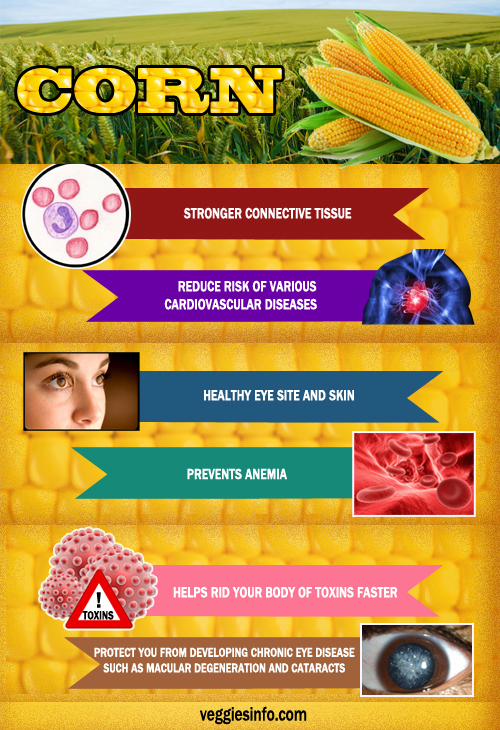
32. Potato
Potato is a starch tuber and a root vegetable with crunchy filling. Potatoes are mainly composed of carbohydrates, protein, fiber and sugar. Potato with skin helps to lower blood pressure and heart disease. Potatoes are used in a weight loss diet, as it is the best filling with no fat. Fried potatoes contain more harmful compounds and can cause health related issues. Potatoes should be consumed in a limited amount as it may rise blood sugar level.Potatoes are commonly eaten fried, steamed, boiled, baked and it makes an excellent snack.
- 100 gm of potato will contain about 17 mg of Vitamin C.
- Starch Content.
- Excellent component of an energy-rich diet for those suffering from diarrhea.
- Helps to cure pimples and spots on the skin.
- This pulp, if applied externally on burns, provides quick relief and faster healing.
- Very good for softening and cleaning skin, especially around the elbows, and the back of the hands.
- Prevent this disease such as cracked lip corners, spongy and bleeding gums, and frequent viral infections.
- Help to Provide Relief From Rheumatism.
- Very effective in reducing inflammation, both internal and external.
White potatoes were first cultivated by local Indians in the Andes Mountains of South America.
Potatoes do not have to be stored in a refrigerator, but they should be kept dark and dry.
| Principle | Nutrient Value | Percentage of RDA |
|---|---|---|
| Energy | 70 Kcal | 3.5% |
| Carbohydrates | 15.90 g | 12% |
| Protein | 1.89 g | 3% |
| Total Fat | 0.10 g | 0.5% |
| Cholesterol | 0 mg | 0% |
| Dietary Fiber | 2.5 g | 7% |
| Vitamins | ||
| Folates | 18mcg | 4.5% |
| Niacin | 1.149 mg | 7% |
| Pantothenic acid | 0.279 mg | 6% |
| Pyridoxine | 0.239 mg | 18% |
| Riboflavin | 0.038 mg | 3% |
| Thiamin | 0.081 mg | 7% |
| Vitamin A | 7 IU | <1% |
| Vitamin C | 11.4 mg | 20% |
| Vitamin K | 2.9 mcg | 2.5% |
| Electrolytes | ||
| Sodium | 6 mg | 0.4% |
| Potassium | 455 mg | 10% |
| Minerals | ||
| Calcium | 10 mg | 1% |
| Iron | 0.73 mg | 9% |
| Magnesium | 22mg | 5.5% |
| Manganese | 0.141mg | 6% |
| Phosphorus | 61 mg | 9% |
| Zinc | 0.33 mg | 3% |
| Phyto-nutrients | ||
| Carotene-ß | 4 mcg | — |
| Crypto-xanthin-ß | 0 mcg | — |
| Lutein-zeaxanthin | 21 mcg | — |
Potatoes are always considered as comfort food as its indulgences has most of the times been through greasy ,oily and processed food products. Potato is a food known for its energy and fatty content. Potatoes are often known as a good source of potassium; they have more potassium content when compared to banana. One unsliced potato consists of 18% of the daily recommended value of potassium for an ideal diet intake. Potassium is essential for the smooth functioning of everybody as it helps in regulating the fluids within the system and also transmits signals from nerves to veins. Potassium is also needed to regulate blood pressure levels in the body by keeping cardiovascular diseases at bay. Vitamin C is a vital nutrient and acts as an oxidant to free radicals as it helps in free flow of oxygen from lungs to other important parts of the body such as brain, spine and heart. This vitamin also helps in boosting body's immune system that aids in collagen production and absorption of iron. The fibre content in potatoes is high and it constitutes to 8% of recommended value of daily intake of potatoes. Fibre is responsible for aiding weight loss and keeping you full for a longer period. Vitamin B6 is present at 10% of daily recommended value and is very essential for energy metabolism and synthesis of haemoglobin. It forms a part of red blood cells.Iron is a major component of hemoglobin that carries oxygen to all parts of the body. Iron also has a critical role within cells assisting in oxygen utilization, enzymatic systems, especially for neural development, and overall cell function everywhere in the body. Thus, iron deficiency affects all body functions, not only through anemia, which appears late in the process of tissue iron deficits.
There is more to a potato than the ordinary fries. Potatoes are used in brewing alcohol such as vodka or potcheen. Potato starch, derived from this vegetable is used in food industry to bind soups and sauces making them thick and consistent. Mashed potatoes or baked potatoes served with butter is a delight on platter, this sinful indulgence has drawn attention of the world cuisine and has made it a classic that one cannot miss on.
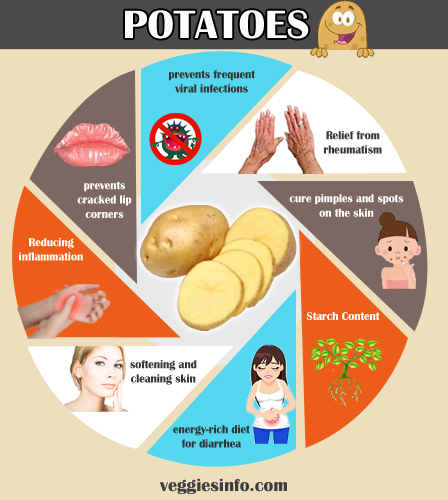
Potato fries also known as French fries are a snack served with ham burgers and burgers at every food joint. In India potatoes are incorporated in their daily day to day food; from vada pav to pav bhaji potatoes are a core ingredient to these lip smacking delicacies. The infamous samosa and aloo chat is are typical street foods that one needs to binge on.
31. Green beans
Green bean is a fibrous and crunchy vegetable with long string running through its length and small kidney shaped seeds. It has a bitter and grassy flavor. Green beans are rich in Vitamins A, C and K. Green beans also contain folic acid, fiber and iron. Green beans have the potential to reduce the risk of obesity, diabetes, heart disease and premature death. It promotes healthy complexion, increased energy and weight loss. Green beans also benefit bone, skin and hair health.
Green beans can be eaten raw or cooked to be served.
- The beans are very rich source of dietary fiber (9% per 100g RDA) which acts as a bulk laxative.
- Fiber helps to protect mucosa in the colon by decreasing its exposure time to toxic substances as well as by binding to cancer-causing chemicals in the gut.
- Adequate amount of fiber has also been shown to Reduce Blood Cholesterol Levels by decreasing re absorption of cholesterol-binding bile acids in the colon.
- Lower the risk of colorectal cancer.
- Decrease the risk of colorectal adenomas (polyps).
- Lower their risk of getting type 2 diabetes.
- Improve mood and memory.
- Lower cholesterol levels.
- Improve diabetics blood glucose control.
- Reduce risk of many cancers.
- Lower blood pressure.
- Regulate functions of the colon.
- Prevent and cure constipation.
- Prevent piles and other bowel problems.
- Lower the risk of coronary heart disease.
| Principle | Nutrient Value | Percentage of RDA |
|---|---|---|
| Energy | 31 Kcal | 1.5% |
| Carbohydrates | 7.13 g | 5.5% |
| Protein | 1.82 g | 3% |
| Total Fat | 0.34 g | 1% |
| Cholesterol | 0 mg | 0% |
| Dietary Fiber | 3.4 g | 9% |
| Vitamins | ||
| Folates | 37 µg | 9% |
| Niacin | 0.752 mg | 5% |
| Pantothenic acid | 0.094 mg | 2% |
| Pyridoxine | 0.074 mg | 5.5% |
| Riboflavin | 0.105 mg | 8% |
| Thiamin | 0.084 mg | 7% |
| Vitamin A | 690 IU | 23% |
| Vitamin C | 16.3 mg | 27% |
| Vitamin K | 14.4 µg | 12% |
| Electrolytes | ||
| Sodium | 6 mg | 0.4% |
| Potassium | 209 mg | 5.5% |
| Minerals | ||
| Calcium | 37 mg | 3.7% |
| Iron | 1.04 mg | 13% |
| Magnesium | 25 mg | 6% |
| Manganese | 0.214 mg | 9% |
| Phosphorus | 38 mg | 6% |
| Zinc | 0.24 mg | 2% |
| Phyto-nutrients | ||
| Carotene-ß | 379 µg | — |
| Carotene-a | 69 µg | — |
| Lutein-zeaxanthin | 640 µg | — |
The substitute to meat and a messiah for the vegetarians is here. Beans are a good source of proteins and dietary fibre they don't just help in keeping your weight under control but also aids in preventing diseases that are life risking. Diseases caused such as cancer, diabetes or chronic heart diseases have something in common. They are all directly or indirectly caused by obesity or being overweight. Beans helps you keep your weight under check and help you control your increasing waist line. It is recommended by my doctors and dietician to add 2 – 3 cups of beans in their diet per week. It is as found out from a recent study that bean eaters weigh 7 pounds lesser when compared to non bean eating counterparts. Green beans contain high levels of Vitamin A and Zea–Xanthin an important dietary fibre what prevents the body from age related muscular diseases. In adition to the mentioned above beans also is a good source of minerals like iron, calcium, magnesium, manganese, potassium and folate to mention a few. Fresh green beans are also known as lean vegetable as it has very low calorie content, as low as 31 calories for 100 grams of beans. It has no saturated fat and is rich in micronutrients extracted from plants.
In order to consume beans in its best form it is recommended to boil them or steam them for an approximate of 5 minutes as it will bring out the flavours of the vegetable and also retain its phytonutrients, vitamins and minerals of this vegetable. Green beans are used to make many delicacies throughout the world and every region has its own way of preparing it. In India the southern regions use beans to make pooriyal a side dish often eaten with rice. The French like their beans in a cold salad with tuna and potatoes, beans sauté with shiitake mushrooms is one of the dishes highly favoured by diet conscious vegetarians.
There is no doubt about the fact that beans is a house of nutrients but it is also known for its side effects of creating gastric problems. This can be dealt by taking the following measures: discard the water in which beans were soaked in prior as it will help in getting rid of 80% of substance that causes flatulence. Do not eat beans too often, let the body adapt and adjust to the intake and limit it to only 2-3 cups a week. Too much of anything can make you sick, so eating the right food in right proportion is the secret to a healthy diet.
